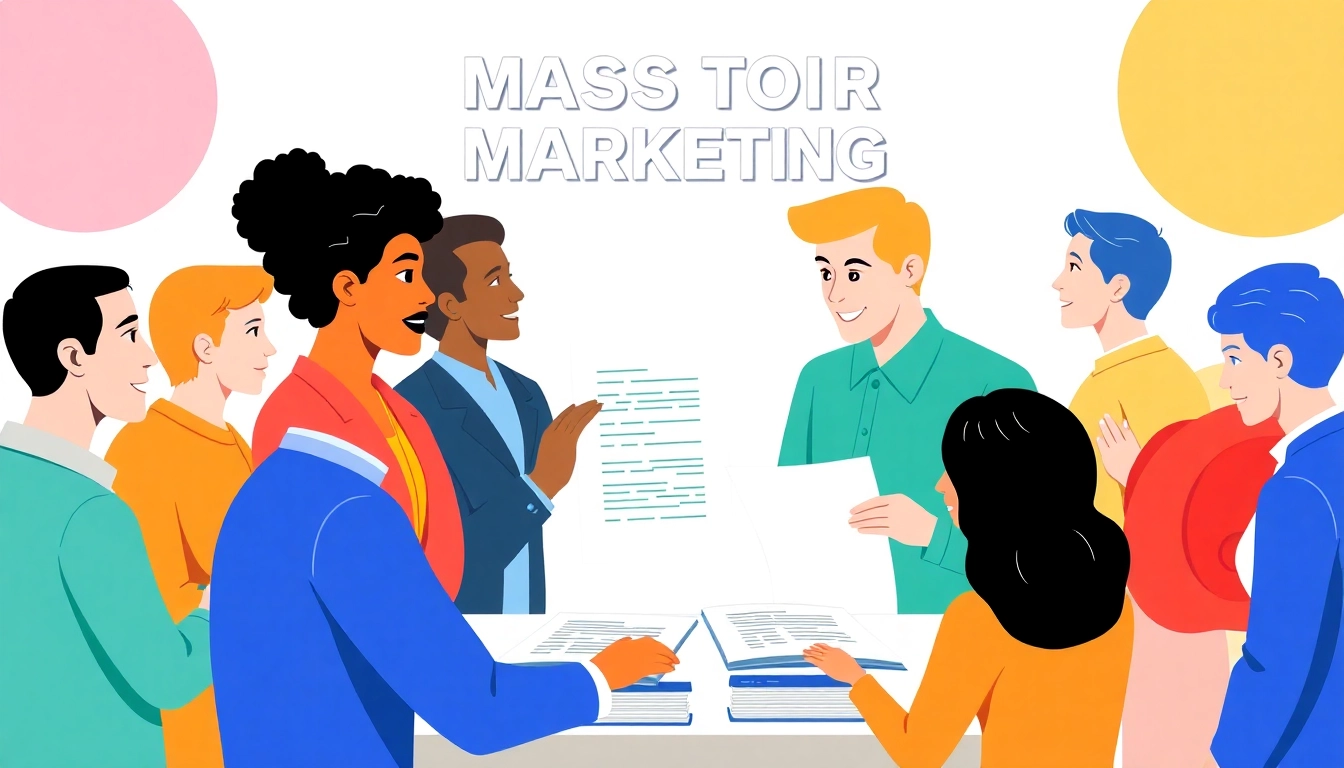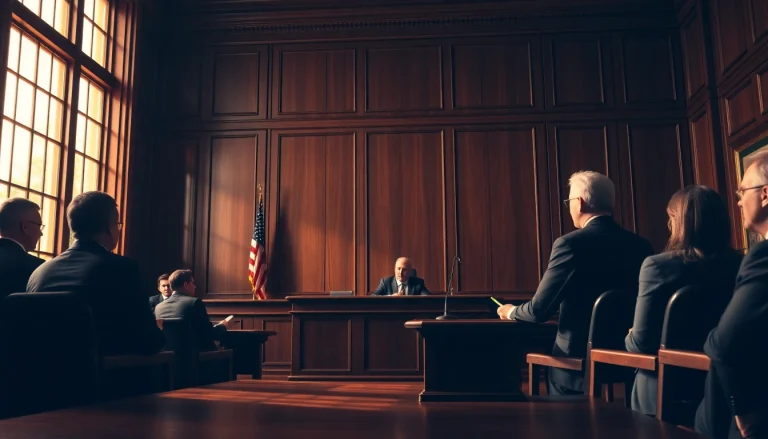Understanding Mass Tort Marketing
What is Mass Tort Marketing?
Mass tort marketing is a specialized branch of legal marketing focused on attracting potential claimants involved in mass tort litigation. Mass torts arise when numerous people suffer similar injuries or losses due to the actions of a single defendant or multiple defendants. Common examples include pharmaceutical lawsuits, environmental disasters, and product liability cases. Effective mass tort marketing aims to reach these individuals through various channels, creating awareness and encouraging them to seek legal representation. For more detailed strategies and insights, refer to this comprehensive resource on Mass Tort Marketing.
Key Characteristics of Successful Mass Tort Campaigns
Successful mass tort marketing campaigns share several essential characteristics, including:
- Targeted Outreach: A well-defined target audience helps in designing tailored marketing messages that resonate.
- Multi-Channel Strategies: Utilizing various platforms—social media, traditional media, SEO, and email campaigns—ensures broader reach.
- Empathy and Support: Campaigns that reflect understanding and compassion towards potential claimants build trust.
- Clear Messaging: Powerful and straightforward communication about the legal process and potential outcomes is crucial.
- Regulatory Compliance: Adhering to all legal advertising regulations specific to mass torts ensures credibility and mitigates legal risks.
Common Misconceptions About Mass Tort Marketing
Despite its growing importance, several misconceptions surround mass tort marketing:
- Only for Large Firms: Many believe only large law firms can conduct mass tort marketing, but small and medium firms can effectively engage with the right strategies.
- Quick Results: There’s an assumption that mass tort marketing will yield instant results, but successful campaigns often require time and persistence to generate leads.
- Uniform Strategy: Some think one-size-fits-all techniques work, whereas tailored approaches are necessary due to the unique nature of each case.
Target Audience for Mass Tort Marketing
Identifying Potential Claimants in Mass Torts
Identifying potential claimants is paramount in mass tort marketing. This process typically involves data analysis, market research, and audience segmentation. While defining the target demographic, marketers often focus on those affected by specific issues, such as:
- Individuals suffering from adverse side effects due to medication.
- Victims of environmental contamination.
- Consumers injured by defective products.
Demographic Insights and Trends
Understanding the demographic profile of potential claimants can inform more effective marketing strategies. Key factors include age, location, socioeconomic status, and health conditions. Notably, older adults may be more susceptible to certain drug-related claims, while younger demographics may be affected by technology-related cases. Monitoring these demographic trends enables targeted outreach, thereby increasing the chances of engagement.
Psychographics: What Drives Your Audience?
Psycho-graphic analysis assesses the values, interests, and motivations of potential claimants. Understanding these factors can drive the tone and content of marketing efforts. For instance, individuals motivated by social equity may respond better to campaigns emphasizing collective action against large corporations, while those concerned about personal health risks may be drawn to campaigns highlighting medical narratives. By resonating with the audience’s psychological drivers, marketers can create more impactful messaging.
Creating a Compelling Marketing Strategy
Essential Components of an Effective Mass Tort Campaign
An effective mass tort marketing campaign should include the following components:
- Research and Analysis: In-depth research to understand the landscape, competitor strategies, and target audience’s pain points.
- Content Creation: Developing compelling content—blogs, videos, testimonials—that educates and connects with potential claimants.
- Legal Compliance: Ensuring all marketing materials comply with legal advertising laws while promoting transparency and trust.
- Outreach Plans: A multi-channel approach combining social media, direct mail, online advertising, and community events to maximize reach.
Leveraging Digital Platforms for Outreach
Digital platforms are powerful tools for reaching potential claimants. Law firms can utilize:
- Social Media: Platforms like Facebook, Twitter, and LinkedIn can be harnessed to create targeted ads and connect with your audience.
- Google Ads: Running PPC ads based on specific keywords related to mass tort cases can drive traffic and lead generation.
- Email Marketing: Nurturing leads through informative content and updates reinforces connections and encourages responses.
Utilizing SEO in Mass Tort Marketing
Search Engine Optimization (SEO) is a critical factor in mass tort marketing. By optimizing content for relevant keywords, firms can increase visibility and attract organic traffic. Essential SEO strategies include:
- Keyword Research: Identifying and targeting phrases potential claimants are likely to search for increases chances of appearing in search results.
- Quality Content: High-quality, informative content that addresses potential claimants’ questions and concerns can elevate search rankings.
- Backlink Strategies: Establishing reputable links within the legal and public health domains boosts authority and improves visibility.
Best Practices and Case Studies
Examining Successful Mass Tort Marketing Campaigns
Reviewing successful case studies provides valuable insights into effective strategies. One notable example is the litigation surrounding a controversial pharmaceutical drug, where the law firm focused on empathetic communication and patient testimonials. They established a dedicated website with resources, FAQs, and an easy intake process, resulting in a significant influx of claimants willing to share their stories.
Common Pitfalls to Avoid
While paving the way for a successful mass tort marketing campaign, it is crucial to avoid common pitfalls such as:
- Neglecting Mobile Optimization: Given the prevalence of mobile device usage, not optimizing content for mobile can lead to lost opportunities.
- Overlooking Local SEO: For many mass tort claims, local search visibility is essential; focusing uniquely on national keywords can limit outreach.
- Ignoring Feedback: Not actively seeking client feedback can prevent marketers from adapting strategies to meet audience needs effectively.
Analyzing Performance Metrics
Performance metrics are essential for measuring the success of mass tort marketing campaigns. Key metrics to consider include:
- Lead Generation Rates: Tracking the number of leads generated through various channels helps identify the most effective strategies.
- Engagement Levels: Monitoring how potential claimants interact with content provides insight into audience interests and preferences.
- Conversion Rates: Evaluating how many leads convert into clients is crucial for determining campaign profitability and effectiveness.
Future Trends in Mass Tort Marketing
Emerging Technologies and Their Impact
The legal industry is constantly evolving, and emerging technologies are beginning to reshape mass tort marketing. Artificial Intelligence (AI) and Machine Learning (ML) are being utilized to analyze claimant data, enabling more personalized marketing strategies. Furthermore, virtual reality (VR) and augmented reality (AR) could introduce new ways to convey legal narratives and client experiences, making the campaigns more engaging and relatable.
Regulatory Changes and Their Implications
Staying abreast of regulatory changes affecting legal advertising and mass torts is essential. Changes in law can influence how attorneys may market their services, necessitating adjustments in strategy. With ongoing discussions around data privacy regulations and advertising ethics, firms must ensure their practices remain compliant while delivering responsive legal information to potential claimants.
Preparing for the Next Wave of Mass Tort Cases
Anticipating the next wave of mass tort cases requires foresight in understanding emerging risks. This may involve proactive monitoring of industries prone to litigation, such as pharmaceuticals, technology, and environmental sectors. Marketers should also prepare their strategies, focusing on adaptability, using predictive analytics based on current industry trends to identify and engage potential claimants before a crisis arises.








